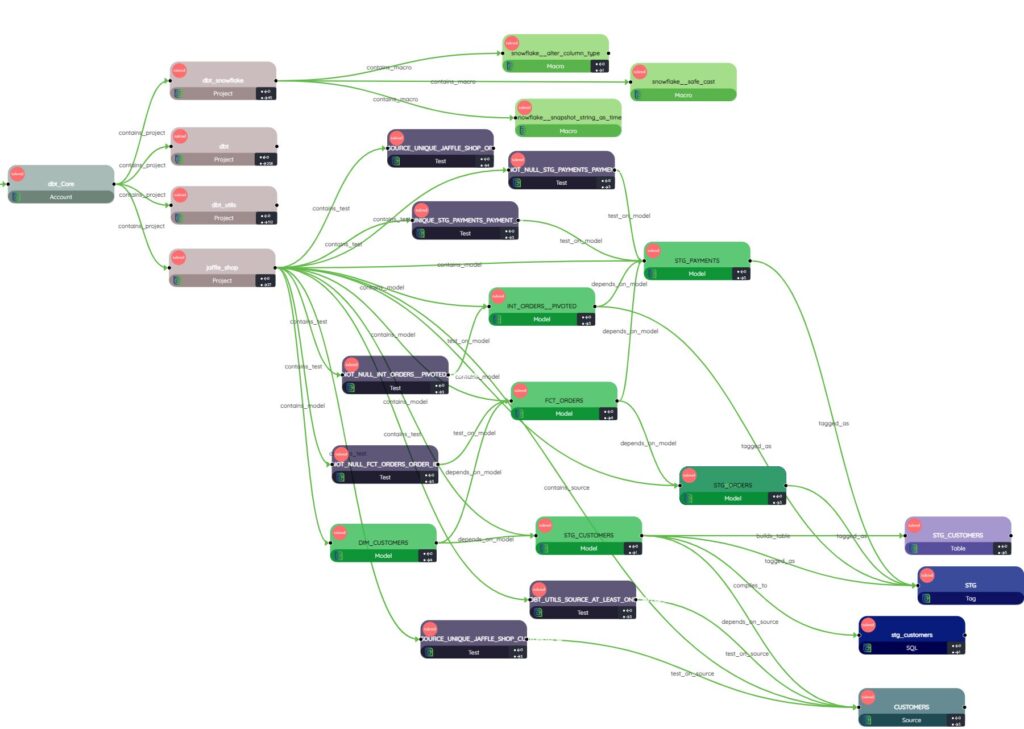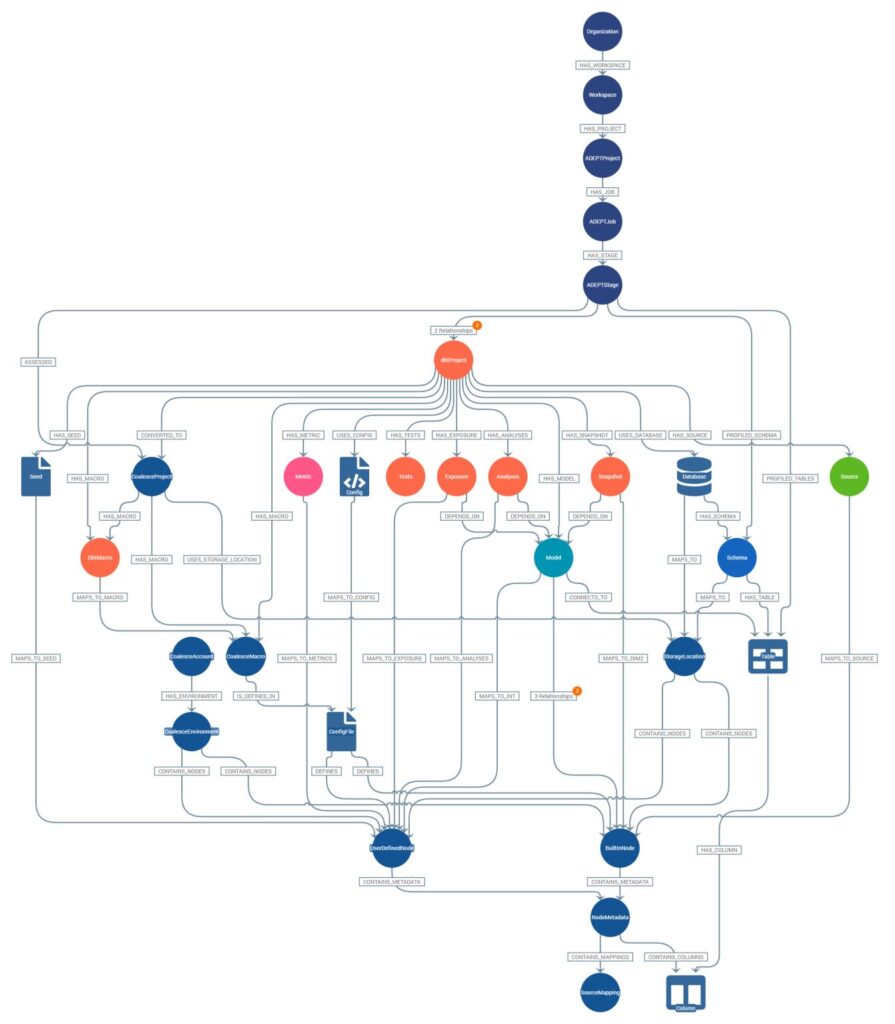Introduction
Think about the keys to your company’s vault.
Handling these is crucial: misplaced, they disrupt access. Lose the understanding of where to find them, you’re locked out of your own treasure. Now, replace these physical keys with digital ones – metadata. They’re vital to unlocking your company’s data resources, and the wealth therein.
Every day, each of us contributes to the creation of 2.5 quintillion bytes of data. That’s the equivalent of supplying 500 new Libraries of Congress every single day! It’s an Everest-high pile of information to scale, but effective metadata management serves as your Sherpa, efficiently guiding you to actionable insights.
In the data race, metadata management isn’t just an option – it’s your sustainable edge.
Understanding Metadata Management: The Key to Data Mastery
Definition of Metadata Management
- The significance of Metadata Management in Data Governance
- Trifecta of Metadata: Technical, Operational, and Business Metadata
Definition of Metadata Management
The term Metadata means data about data. Metadata management might sound intimidating, but it’s essentially the administrative discipline that interprets data. According to Gartner, it’s the “process and governance surrounding the effectiveness, efficiency, economics, and security of metadata usage for the enterprise’s desired business outcome.”
Not quite clear? Think of it this way. It’s the master key to your data, adding context and levelling up your ability to analyze and leverage it. Metadata Management focuses on data information like data storyline, what is depicted by the data, its potential applications, and where and how it’s stored.
Or, in a nutshell, it provides a 360-degree view of your organization’s data, making it more insightful and effective.
The Role of Metadata Management in Data Governance
Good Metadata management is like the city lights in a dark night – it illuminates the right path. In the realm of mountains of data, Metadata Management is the compass that navigates you to the quality data.
Data governance is all about managing, improving, and leveraging data to drive business outcomes. It’s a critical business strategy that includes setting up processes, policies, and standards for data handling across the organization. And right at its heart lies Metadata Management.
The holistic view of your data you get from Metadata Management helps in making informed decisions, ensuring compliance, and enhancing data quality – all key components of sound data governance.
Imagine never suffering from non-compliant data or spending unneeded resources in tracing useful data. Seems like a dream, right? It’s the reality of effective Metadata Management.
Types of Metadata: Technical, Operational, and Business Metadata
Primarily, Metadata can be categorized into three types: Technical Metadata, Operational Metadata, and Business Metadata.
- Technical metadata discusses the design and specifications of data, layout, and relationship with other data. Crucial for IT specialists and database administrators, it works as a manual, assisting in understanding how data is stored and how it interacts.
- Operational metadata is the middleman providing operational stats and system audits of the data. It tracks the nitty-gritty details, including when and by who the data is accessed, its lifecycle, and any changes made. It not only helps in maintaining security but also provides insights into data usage trends.
- Business metadata is the superhero every business user needs. It includes business descriptors and glossaries, policies, and classification and categorization rules that inform users about data meanings, essential to driving data-driven decision-making and improving analytical capabilities.
Top Metadata Management Tools to Enhance Your Data Strategy
- Learn why metadata management tools are essential in a data-driven business
- Understand distinctive features of effective metadata management tools
- Explore some leading metadata management tools in the market
Overview of Metadata Management Tools
Becoming fluent in data isn’t just about sifting through a massive heap of raw information. Instead, a truly data-driven company understands the context and quality of information, something that metadata management tools excel in providing. Their importance cannot be underestimated because they can uncover new insights, break down data silos, and improve decision-making processes. Through a comprehensive metadata repository, businesses gain a detailed map of their data landscape, helping them spot inconsistencies and improve the overall quality of their data.
Metadata management tools, in essence, offer a systematic way of handling metadata – the data describing primary data (also known as the ‘data about data’). They capture and centralise metadata in a coherent and navigable landscape. By doing so, companies can save time, reduce errors, and make data more accessible and understandable to all stakeholders.
The incredible value they bring to businesses becomes more apparent when dealing with big data. They eliminate the bewildering complexity often associated with vast datasets. By structuring, organizing and offering deep insights into data, they accelerate the discovery of valuable information to drive fast, accurate decision-making.
Key Features to Look for in Metadata Management Tools
A worthwhile metadata management tool should provide granular visibility into your enterprise’s data landscape. The following features are essential to make metadata management more engaging and less of a chore.
- Automation is a game-changer.
By minimizing manual tasks and the associated risks of making mistakes, automated metadata management tools increase productivity and data accuracy. Also, they use machine learning to organize and tag metadata that would otherwise consume an enormous chunk of employee time.
- Integration capabilities are a crucial consideration.
A metadata management tool should easily interface with other IT infrastructure. This capability ensures continuous communication between different databases, applications, and IT processes, improving cohesiveness and eliminating data silos.
- Data governance and compliance features are essential
Especially in this era of stringent data regulations. Metadata management tools should enable defining, implementing, and enforcing policies and procedures that keep data compliant with internal policies and external regulations.
- User-friendliness and intuitive interfaces can make a world of difference.
Metadata management tools should be usable by data professionals and non-data-oriented stakeholders equally. Most importantly, they should make complex data easy to understand and navigate.
Top Metadata Management Tools in the Market
Numerous metadata management tools exist in the market, but here are a few recommended options that have been recognized for their efficiency, user-friendly interface, robust feature list, and powerful capabilities.
- ADEPT, is our proprietary metadata driven platform, focused on providing lineage analysis and thorough assessments of technology environments to inform data strategies and migrations.
- Collibra, a leading metadata management solution, focuses heavily on data governance and stewardship. It offers a comprehensive data intelligence platform, empowering teams to find, understand, and trust their data.
- Informatica, popular for its metadata-driven AI capability CLAIRE, provides a unified, powerful, and feature-rich metadata management solution. It offers capabilities for both business and technical users, enabling data discovery, cataloging, governance, and stewardship.
- Another remarkable tool is Alation, which pioneered the data catalog concept. Alation offers an intuitive platform that is excellent for data discovery and governance. It uses machine learning to offer insight suggestions, improving productivity and hastening decision making.
These metadata management tools are a crucial part of any data strategy. They offer increased visibility, improved accuracy, higher productivity, and critical compliance capabilities. By understanding a tool’s key features and exploring the top options in the market, businesses can make an informed decision that suits their data strategies best.
A visual representation of Lineage Analysis, sourced from our ADEPT platform. Experience it firsthand with our free trial here.

Metadata Management Best Practices: Ensuring Data Quality and Consistency
- Crafting an effective metadata management strategy is crucial.
- Successful implementation steps for metadata management can lead to enhanced data quality.
- Real-life examples underline the benefits of metadata management implementation.
Importance of a Metadata Management Strategy
Understanding and leveraging data is like finding the proverbial needle in a haystack for many companies. This is where a strong metadata management strategy comes in. Similar to a compass in navigation, metadata provides a bearing, a reference point, and a context to your data landscape.
A well-devised metadata management strategy enhances the understanding of your company’s data ecosystem. It allows you to create a data catalog, enabling your team to identify what data exists, where it resides, its interconnected relationships, and its usage – all of which contribute to more informed decision-making.
Further, with the proliferation of data regulation acts like GDPR and CCPA, it’s essential to keep track of data Meta’s. Understanding the data lineage, usage, and the lifecycle of your data assets can help ensure compliance with these stringent regulations.
Steps to Implementing a Successful Metadata Management Practice
Any successful practice, including metadata management, thrives on a well-planned and executed strategy. This includes understanding the current state of your data landscape, identifying the metadata that matters, selecting the right tools, and then designing and executing the strategy.
Start with assessing your current data landscape. This involves identifying your key data assets, understanding their usage, and mapping their lineage.
Now, let’s talk about post-assessment – choosing the metadata that matters. Remember, not all metadata is equal. Certain types, like structural metadata or legislative metadata, can have more bearing on your decision-making process than others.
Now it’s time to bring in the right tool. Your chosen metadata management tool should be robust enough to handle the complexities of your data landscape while being flexible enough to adapt to your changing business needs.
Finally, remember to treat this as an iterative process. Constantly re-evaluate and tune your strategy to align with your evolving business objectives and data landscape.
The Benefits of Metadata Management: Unlocking Your Data's Potential
- Elevate data quality and unity.
- Boost security measures and embrace compliance.
- Unearth hidden intel and leverage decision-making.
Improved Data Quality and Consistency
Metadata provides a much-needed frame of reference for your data, standardising it for ease and efficiency. Metadata Management plays a crucial role in ensuring that the data in your organization is of high quality and consistent.
Let’s take a relational database as an example (A type of database that organizes data into tables that can be linked—or related—based on data common to each). In such databases, the metadata describes the structure, relationships, and restrictions amongst tables which unifies the data in the database. Consistency is the basis of reliable data, making it valuable, usable, and trustworthy.
Metadata management results in improved data quality by enforcing standards and consistency by ensuring the same data representations across the firm. The result? Your data works in harmony, improving its usability and providing more accurate results.
Enhanced Data Security and Compliance
Metadata is the unsung hero of data security, adding an extra layer of protection and helping you stay on top of compliance regulations. How does it achieve this? Simple, metadata describes who created the data, how it has been used, and by which processes. By tracking usage, it safeguards sensitive information, deterring nefarious activities and maintaining data integrity.
When firms embrace metadata management, they are essentially publishing a social security policy for their data. Unauthorized access becomes a task of impossibility and regulatory compliance requirements can be met with accuracy and precision. Compliance doesn’t have to be a thorny issue when you’re equipped with a metadata management strategy.
Increased Business Intelligence and Decision Making
Imagine holding a detailed map of your data landscape; knowing every twist, turn, and shortcut. That’s exactly what metadata management offers. It’s the key that unlocks the door to actionable business insights and sharp decision-making.
Metadata carries with it a wealth of contextual information about your data. When analyzed using the right BI tools (term breakdown: Business Intelligence tools are software that collect, transform, and present data to help decision-makers drive business growth), you are able to get a birds-eye view of your data’s lifecycle.
This visibility assists in identifying trends, revealing opportunities, and predicting outcomes. With data-driven insights at your fingertips, decision-making becomes a calculated process, not a game of chance.
Data is the soil from which opportunities grow. Metadata management, therefore, is the water and sunlight, nurturing your data, and allowing it to flourish into significant business value. Embarking on a metadata management journey isn’t just good practice, it’s the golden ticket to unlocking the potential hidden within your data richness.
Building a Robust Metadata Management Framework
- Forge the pillars of a successful Metadata Management Framework
- Chart a path with calculated steps toward framework construction
- Keep your framework fresh and agile with effective maintenance and updates
Key Components of a Metadata Management Framework
To unlock your data’s potential, having a well-structured metadata management framework is indispensable. Let’s outline the keystones that fortify this framework.
- Metadata Repository – This is the depot where your metadata resides. It should offer easy access and use and promote consistency in data interpretation across the board.
- Metadata Integration Tools – These are confluence points where one data pipeline flows into another. Tools like ETL (extract, transform, load) processes play a pivotal role in organizing your raw data.
- Metadata Interface – This is the access window for users to interact with available metadata. An intuitive, user-friendly interface accelerates understanding and the application of data.
Steps to Building a Metadata Management Framework
Step 1: Define Objectives – Identify what you aim to achieve with the Metadata Management Framework. The objectives vary from enabling accurate predictive analysis, and improving operational efficiency, to fostering innovative strategies.
Step 2: Identify Metadata Categories – Not all metadata are created equal. Find out what data comes with high-usage frequency and what remains under-used. The categories might include operational, technical, or business metadata.
Step 3: Data Profiling – Analyzing and understanding the attributes of your data. This will aid in creating rules for data quality, linkages, and anomaly detection.
Step 4: Implement and Test – Roll out the framework within a controlled environment. Check for errors and rectify the issues before its full-fledged launch.
Maintaining and Updating Your Metadata Management Framework
Maintenance and updates carve a dynamic outlook for your Metadata Management Framework. Under this umbrella falls the regular audit of metadata structure, the updating of metadata interfaces, and constantly educating the staff about the changes.
- Regular Audits – Routine audits keep your data’s health in check. They detect inconsistencies and gaps, offering opportunities to plug those holes and enhance overall data performance.
- Updating the Interface – Keep your interface agile. In case of new data input or modification in data manipulation requirements, your interface should be capable of quick updates.
- Staff Training – As the pulse of your data evolves, so should the understanding of the team handling it. Regular training sessions ensure everyone is on the same page about the data climate of your company.
Overcoming Metadata Management Challenges
- Navigating common Metadata Management hurdles.
- Implementing successful strategies for overcoming obstacles.
- Grasping future trends and the role of AI and machine learning in Metadata Management
Metadata management can encounter several complexities. These range from technical roadblocks to an underestimation of its importance in a company’s larger data strategy. However, with the right approach and understanding of potential issues, businesses can leverage strategies to effectively manage their metadata and thus, fulfill their data’s potential.
Common Challenges in Metadata Management
Amidst the effort to unlock a company’s data potential, professionals commonly encounter the bumpy terrain of Metadata Management. These include:
- Lack of understanding and awareness – Explaining the importance and benefits of metadata management is often met with glazed-over eyes and confused faces–making organization-wide support a challenge.
- Technical difficulties – With a diverse data landscape, compiling and managing metadata from various sources and formats can become a complex task.
- Privacy and security issues – Metadata in itself can reveal a lot about the underlying data, raising concerns about privacy and confidentiality.
By acknowledging these challenges, businesses can take effective measures to overcome them and reach their goal of maximum data utilization.
Strategies to Overcome Metadata Management Challenges
Overcoming these hurdles doesn’t need to be a daunting task. Here are some actionable strategies:
- Increased awareness – Drive home the value of metadata management through periodic training and information sessions.
- Integration of systems – Use structured processes and automation where possible, to reduce the manual labor involved in managing metadata.
- Vigilant security processes – Implement rigorous privacy and data protection measures to ensure metadata doesn’t fall into the wrong hands.
Each of these strategies can put a business on the path to effective metadata management and, subsequently, enhanced data utilization.
Future Trends in Metadata Management: AI and Machine Learning
As we venture further into the information age, artificial intelligence (AI) and machine learning (ML) are emerging as key players in metadata management. These technologies can automate metadata creation, management, and application, thereby increasing efficiency and reducing human error.
In the not-so-distant future, AI and ML will likely become prevalent in metadata management, transforming the way businesses leverage their data. Preparing for this shift now can position a company to take full advantage of these advancements when they become standard practice.
With AI and ML stepping in, the stage seems to be set for a revolution in data management and utilization. However, mastering the current challenges and strategies remains a crucial part of the journey to unlock your company’s data potential.

Wrapping Up the Data Wonders with Metadata
Clarifying the cryptic nature of your data with stellar metadata management is like knowing the secret language of your company’s most precious asset. It fosters decision-making prowess, accelerates speed-to-insight, and shatters compliance challenges.
Your company’s data potential? It’s less of a mystery when a sound metadata management strategy takes the helm. Remember, in this tornado of information age, power rests with those who comprehend their data’s core.
So, how do you walk this data transparency path? Begin by making the metadata management conversation recurring inside your organization. Evaluate your current state, define your objectives, and then align your metadata strategy with your business goals.
How would your company change the game when provided with data you can trust and easily understand? Set your mind on that future. Think of it as a new dialogue in business intelligence; one where your data stops speaking in an alien tongue. That can become the future of metadata in your organization.
Drop us a message below and let’s explore this exciting terrain together.




